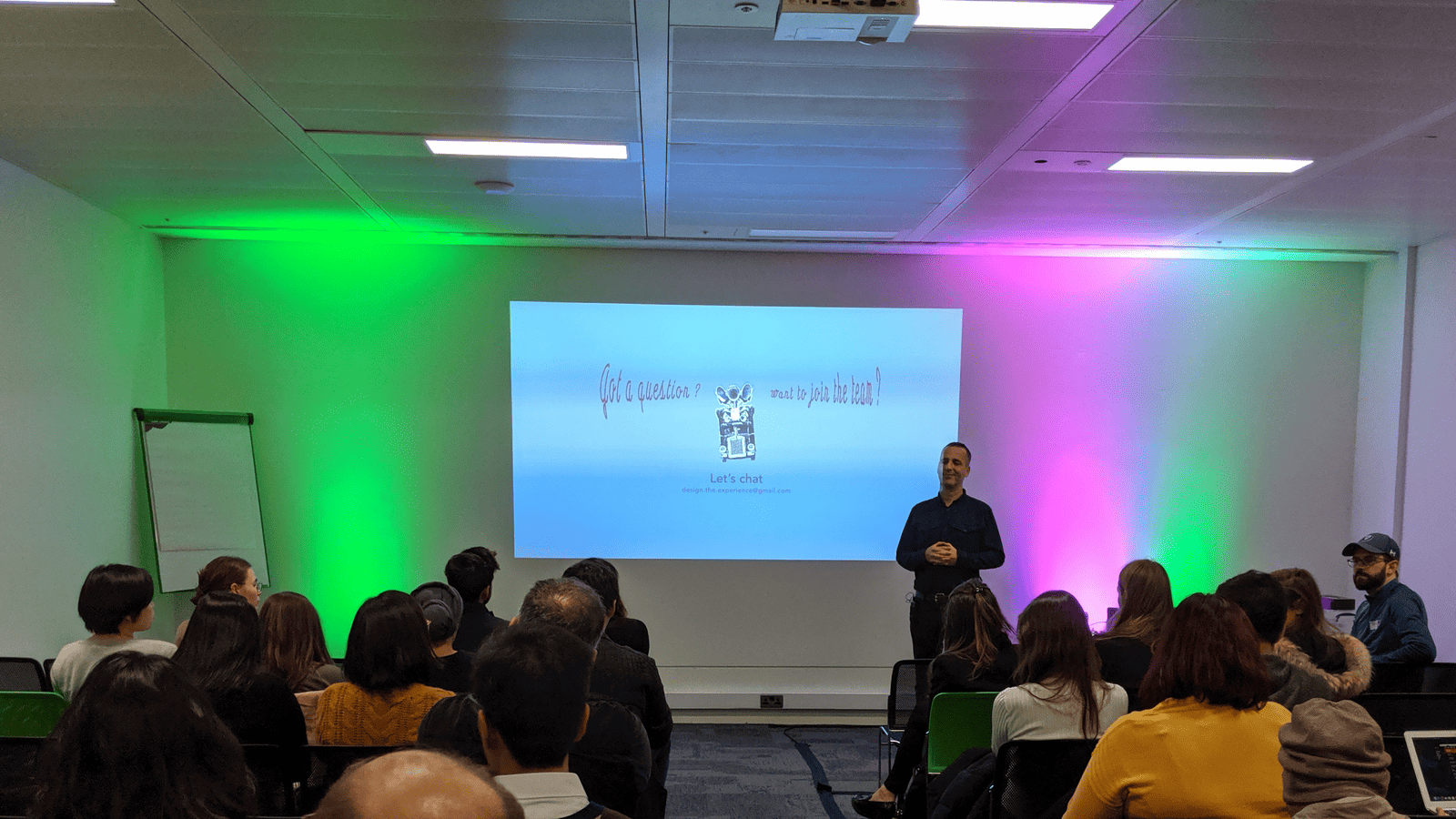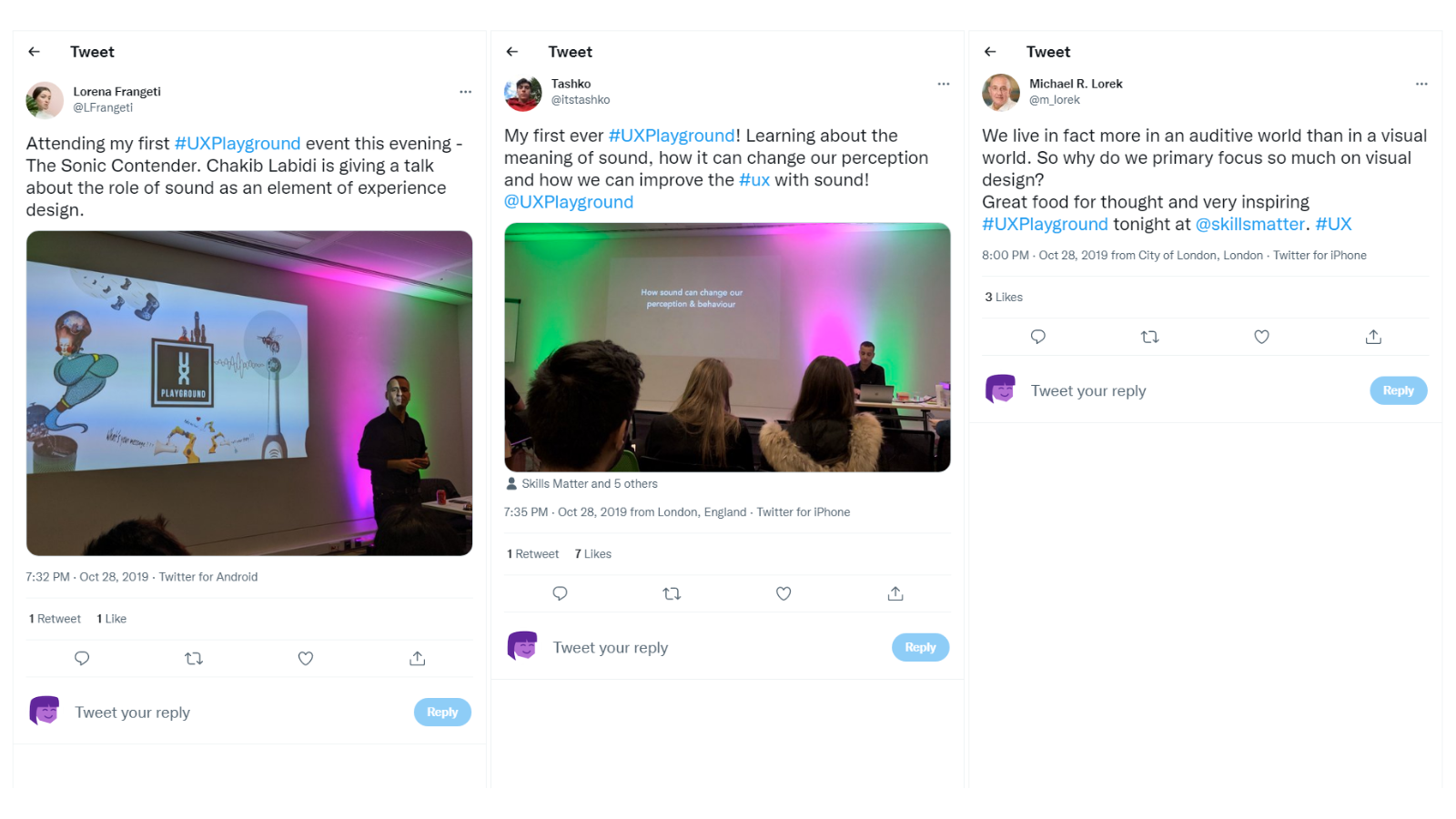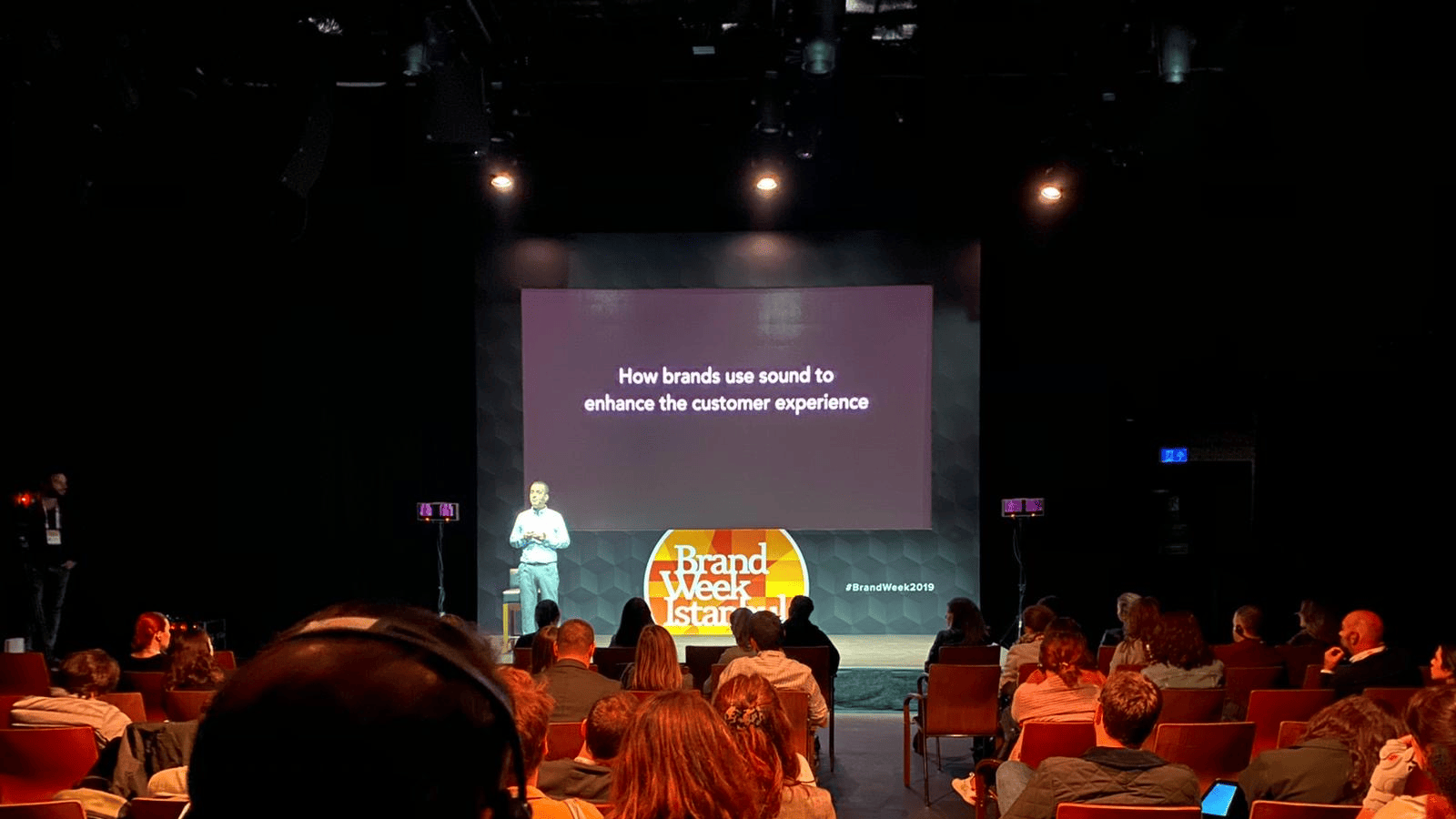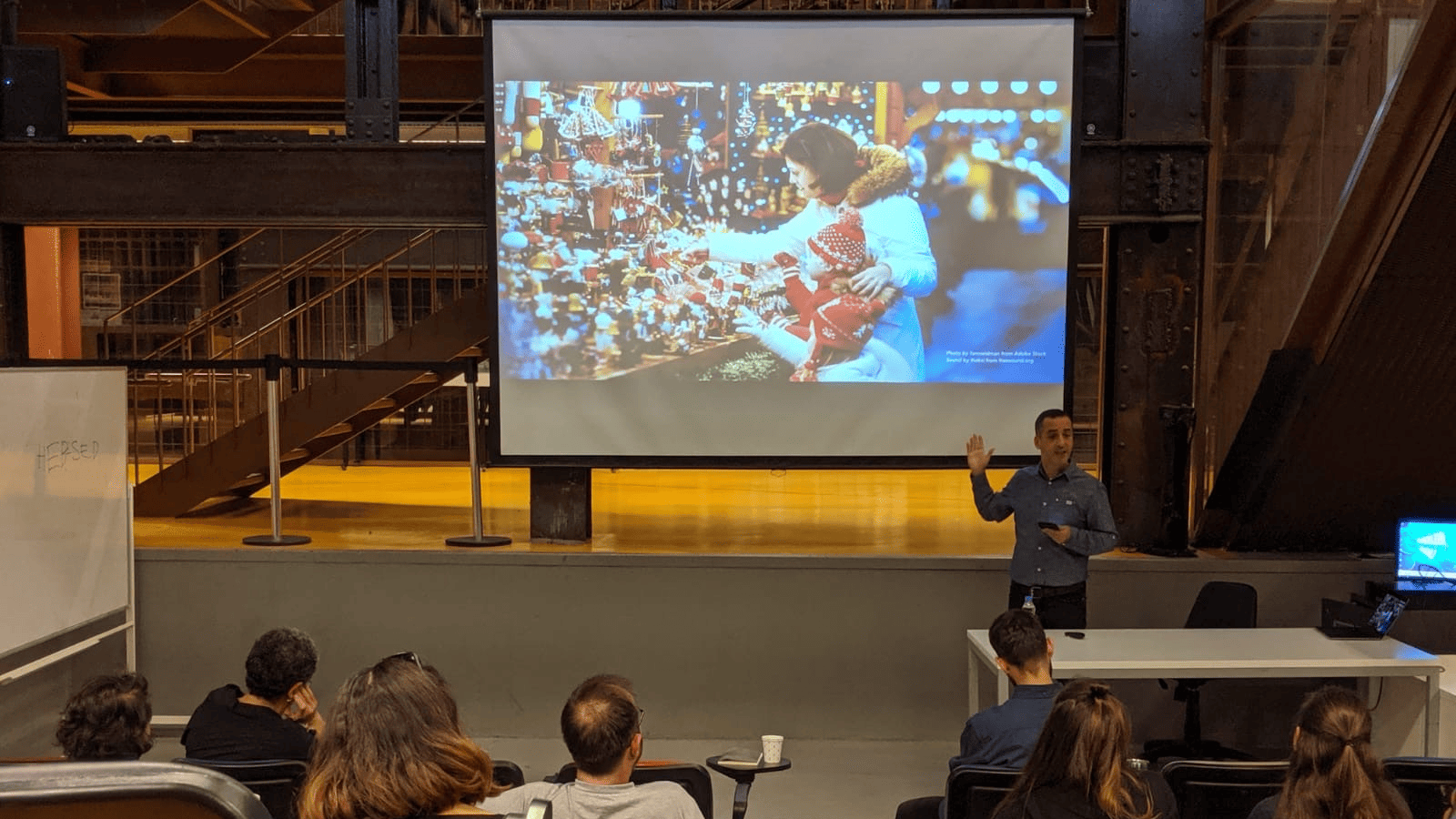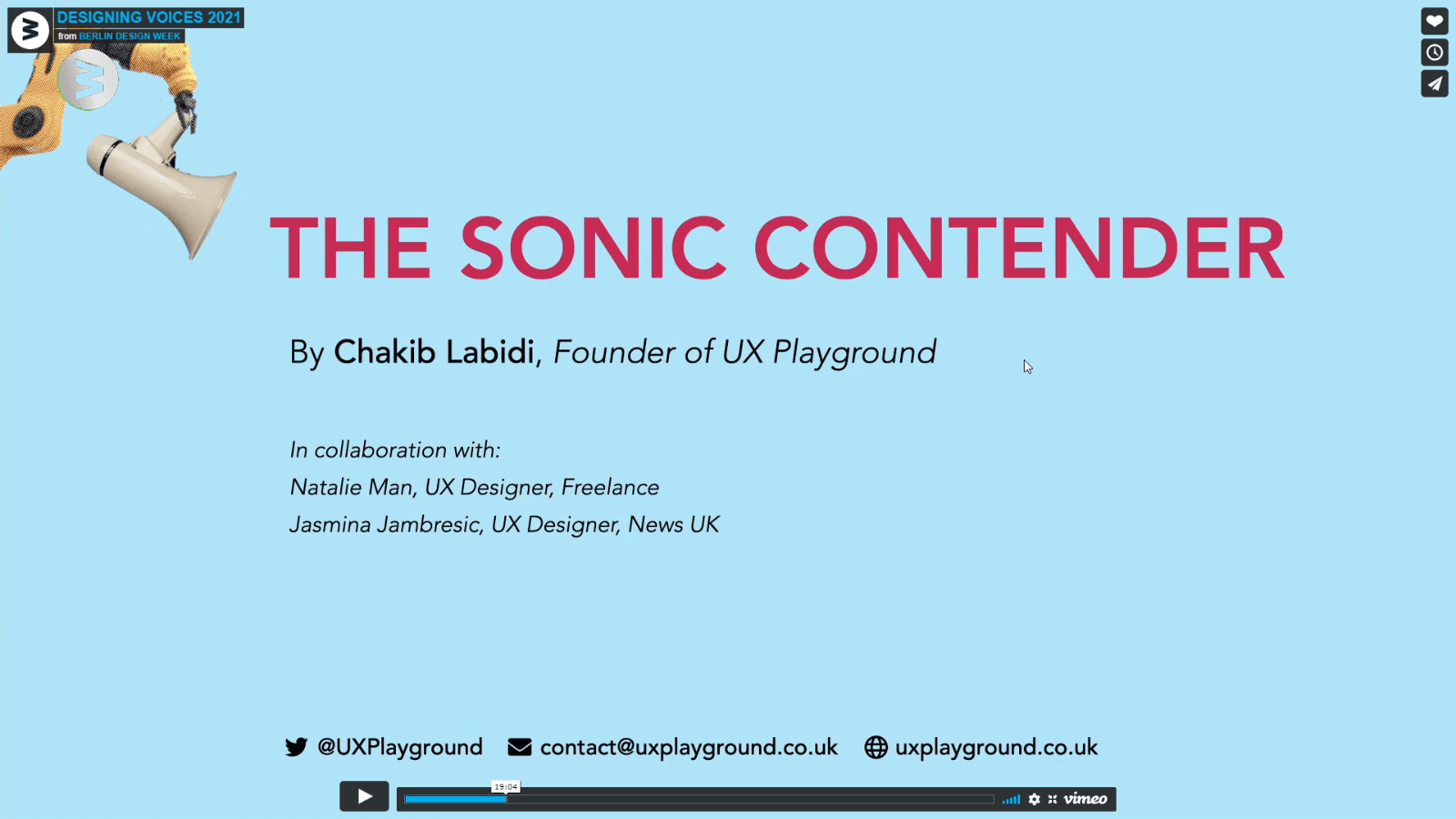Exploring sound in user experience design
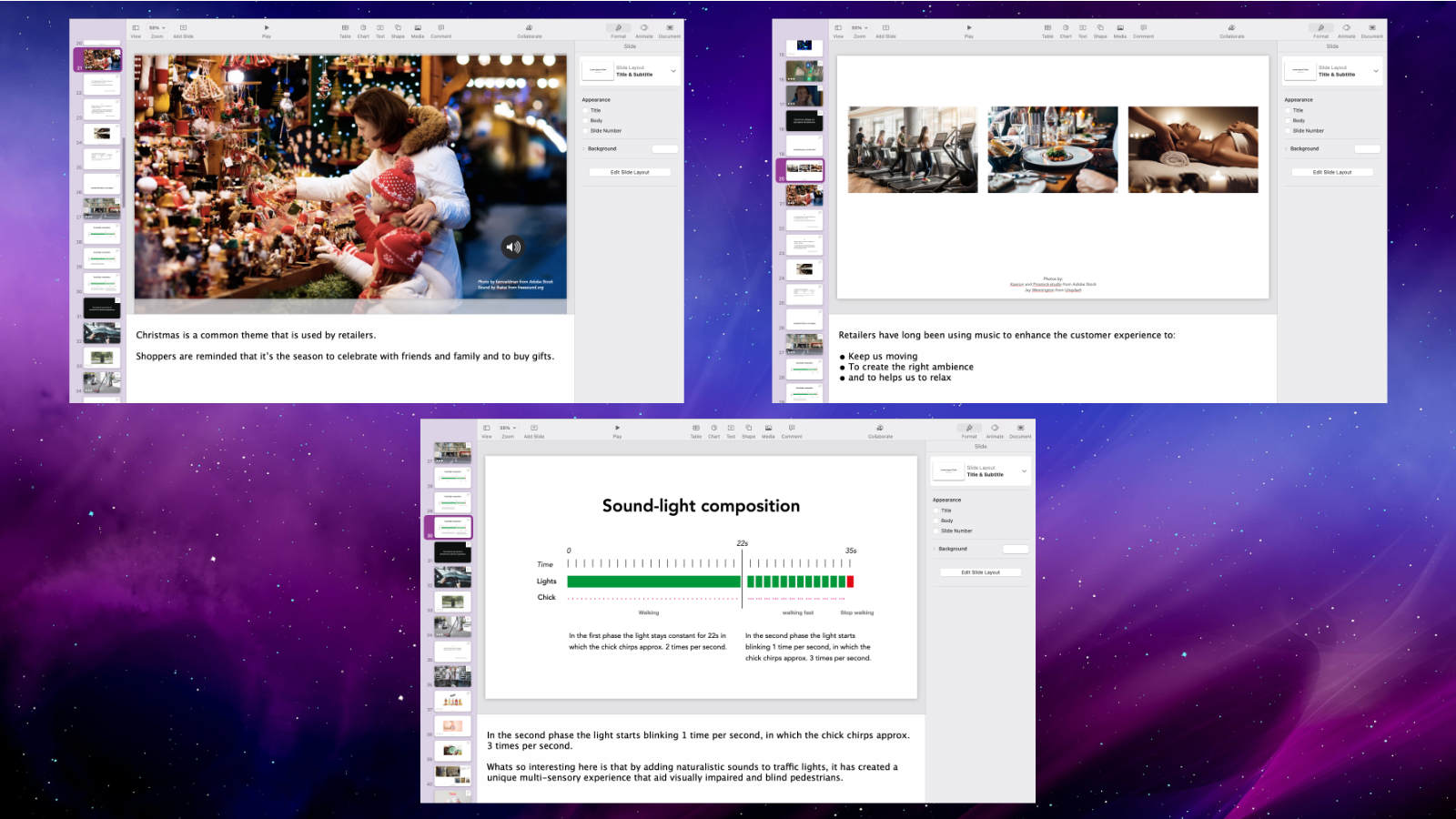
Key learnings
"Sound" was a very fascinating topic, where I learnt about many industries/disciplines e.g. retail, marketing, game design etc. utilising this element to create user experiences that we subconsciously process. It made me consider how our everyday interaction with "things" can be affected by the environment it was used in e.g. physical vs digital. This project also affected my career interest to be more strategy and content-first focused. As a special note, I also had the opportunity to attend my very first business trip with my colleague.
Overview
When designing user experiences, it is common for designers to focus on visuals when creating interactions. As technology continues to grow rapidly, more sophisticated products are entering the market and creating new experiences for consumers. These products are allowing us to use our 5 human senses to interact with its multimodal interfaces (e.g. voice, touch, gesture etc.), therefore creating a multisensory experience.
Sharing our research with the community
Our goal was to create a presentation about sound in user experience design within 3 months. This research project was commissioned by Kapital Media UK for Brand Week Istanbul. It was later presented at UX Playground (Skills Matter in London and webinar), Istanbul Bilgi University (industrial design department) and Berlin Design Week.
The following are key areas we focused on for our research:
- What is the purpose of sound in our everyday lives
- How does it impact our behaviour and perceptions as consumers
- How do brands use sound to enhance their customers’ experience
Team
Natalie H. Man, UX Designer, Freelance
Chakib Labidi, Senior UX Designer and UX Playground founder
Jasmina Jambresic, UX Designer, News UK
Sound is everywhere
For this exploratory project, sound is an overwhelmingly complex topic. Before we started our research, I created a mind map in Miro to capture our questions and thoughts. This helped us to consider the following:
- The purpose of sound and how they are created
- Identify how different industries use sound
- What is the connection to user experience design
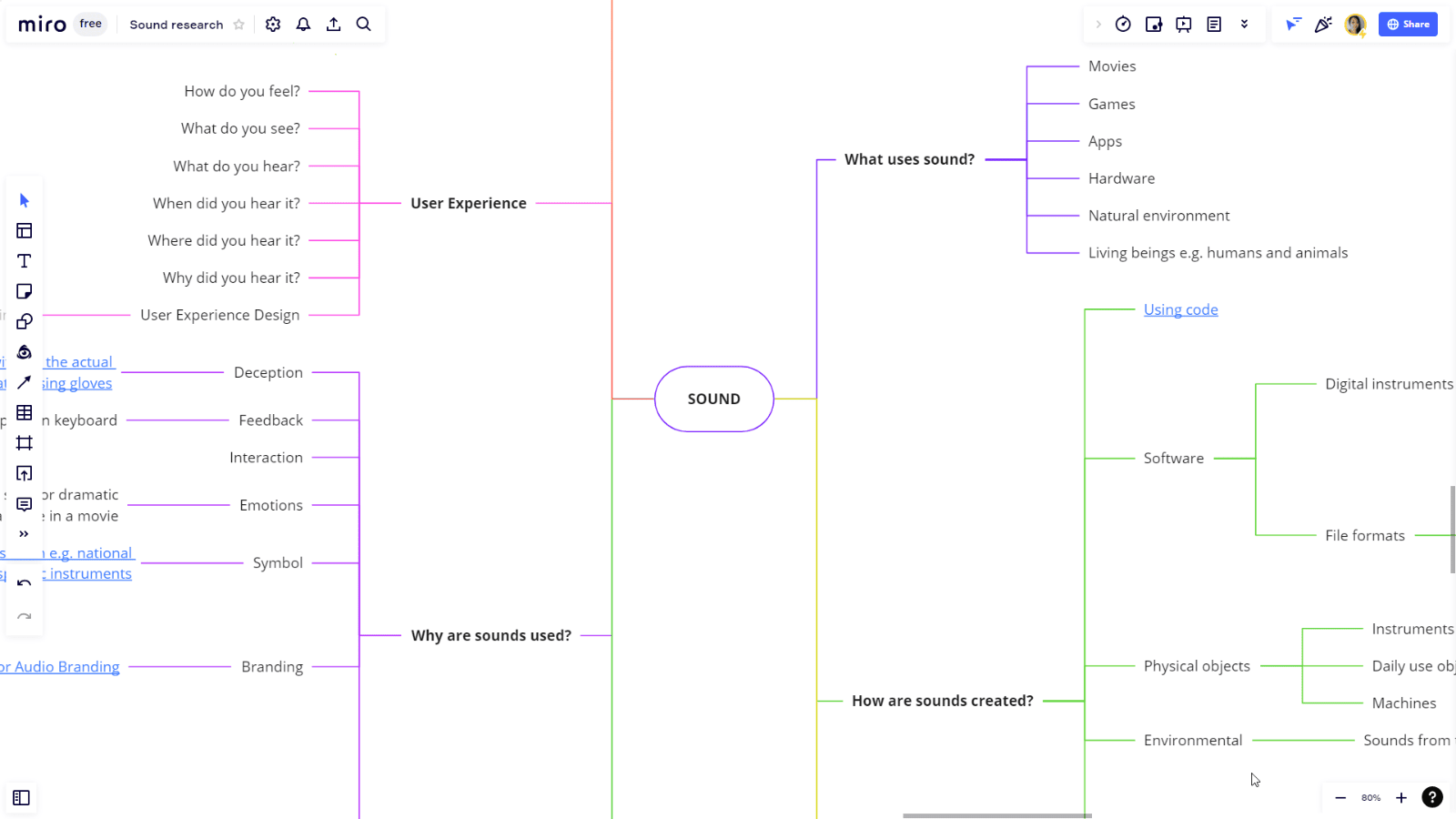
After reviewing the mind map, we conducted our research and documented our findings in Google Docs. For each link found, I would categorise them e.g. environment, game design, brands, music etc., and provide a summary to highlight any relevant details. This summary was useful for our team’s progress updates and also as a good reference for our work later on.
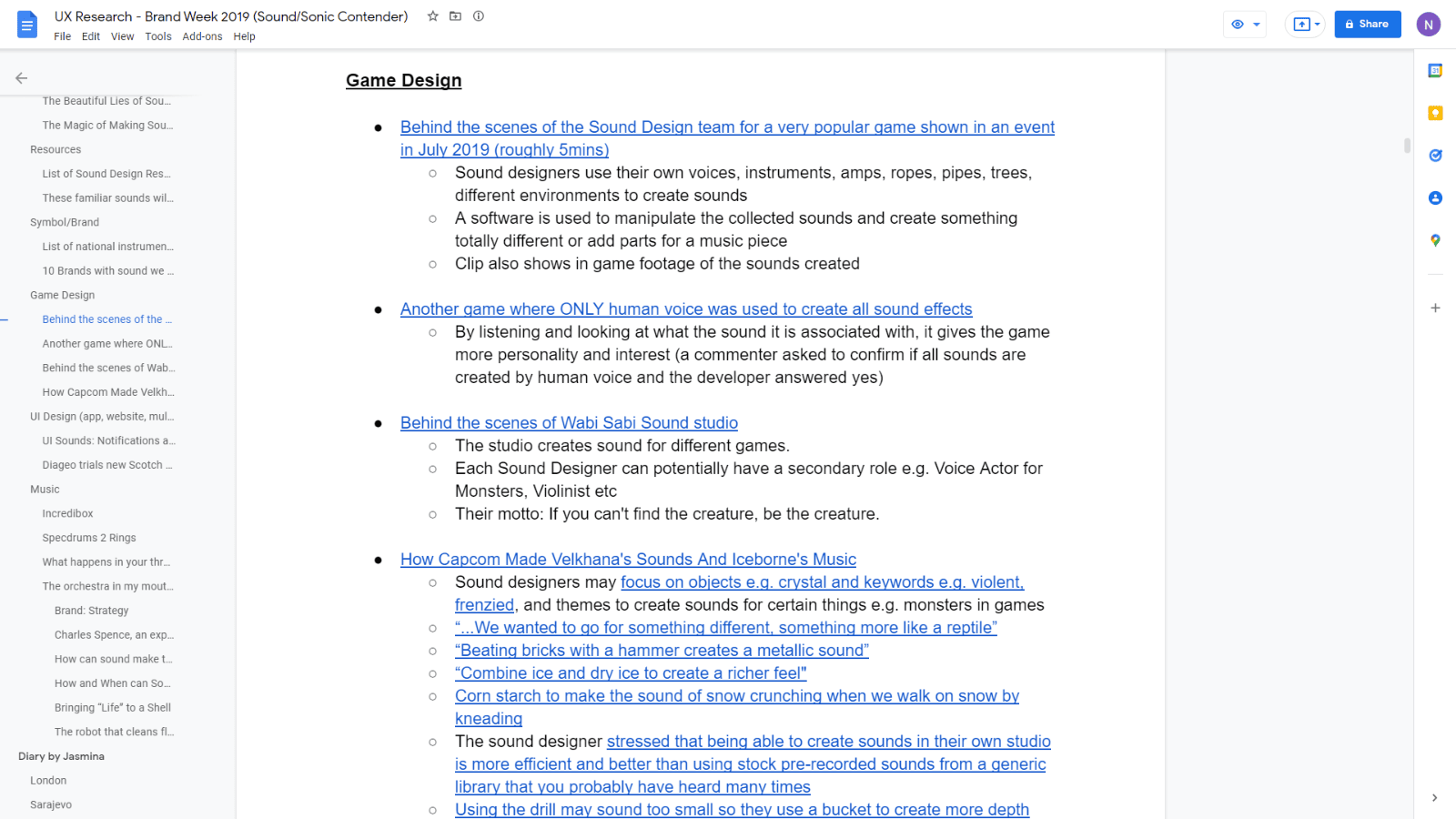
We also considered our hobbies and interest, in relation to sound impacting our experiences. Jasmina shared a short diary of her travels in London and her hometown in Bosnia. Chakib also shared short video clips of his travels showing the sounds he hears at different places e.g. security gate at Charles de Gaulle airport in Paris and a traffic light crossing in Madrid.
As an analysis activity, I found it very interesting to distinguish sounds that are either man-made or natural. I realised that for any environment or activity, all sounds are constantly competing for our attention. We are all subconsciously choosing what sounds to process for our decision making and navigating the environment.
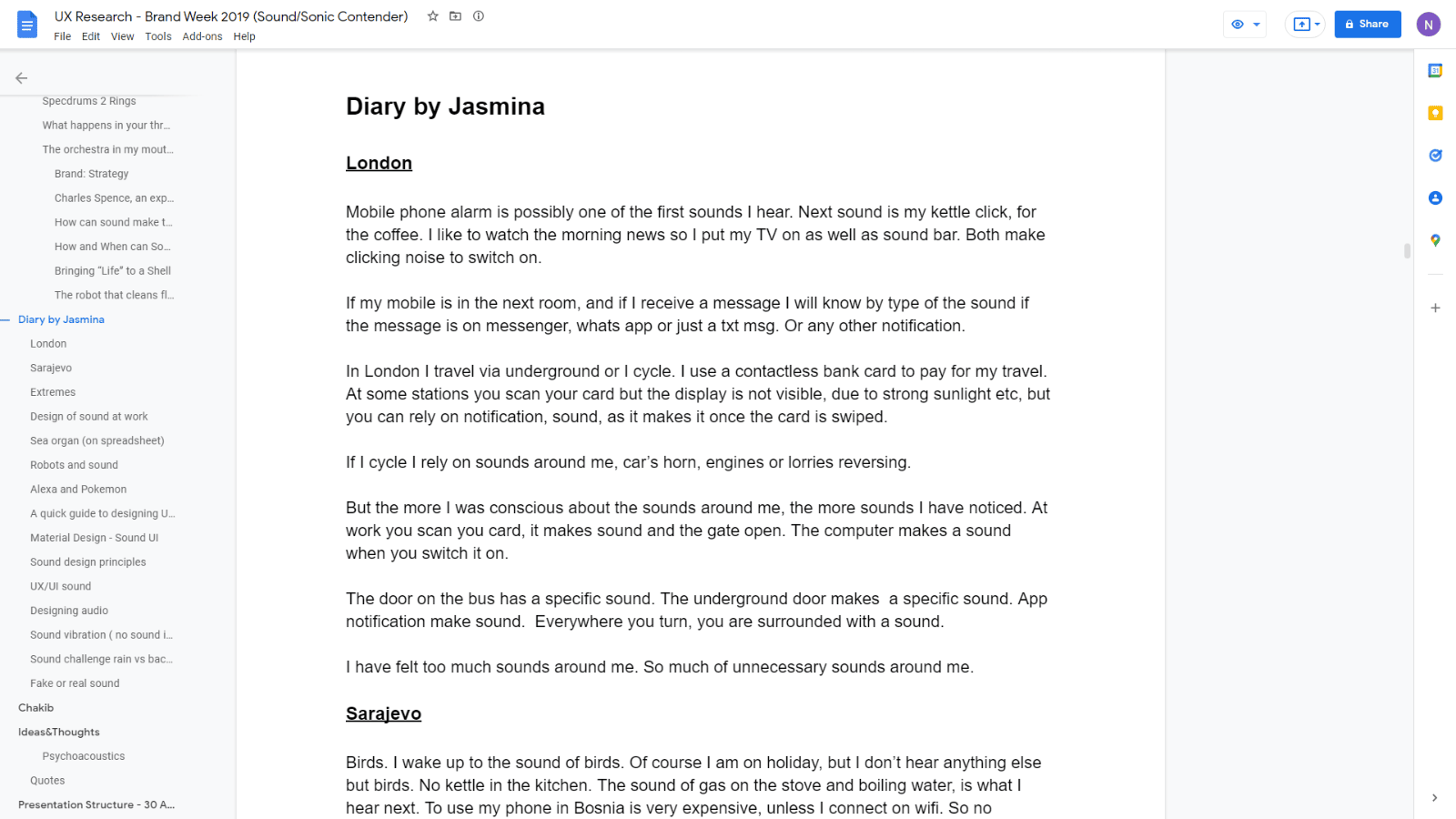
Creating the presentation
We created a high level content structure based on our research with the following considerations:
- What areas to cover in the presentation
- The chosen areas should not be too narrow and specific
- The speaker can easily explain the topic in sufficient detail for the audience to understand
- The audience should be able to easily relate to the topic e.g. in relation to their everyday life
- Are there too much/too little content for a 20 minute presentation?
We had numerous meetings to review the content structure before agreeing on a final version for creating the content. This process taught me to always take note of any personal questions/thoughts, which was very useful for creating the content structure and providing a focus on what needs to be achieved (and also generally good for writing).
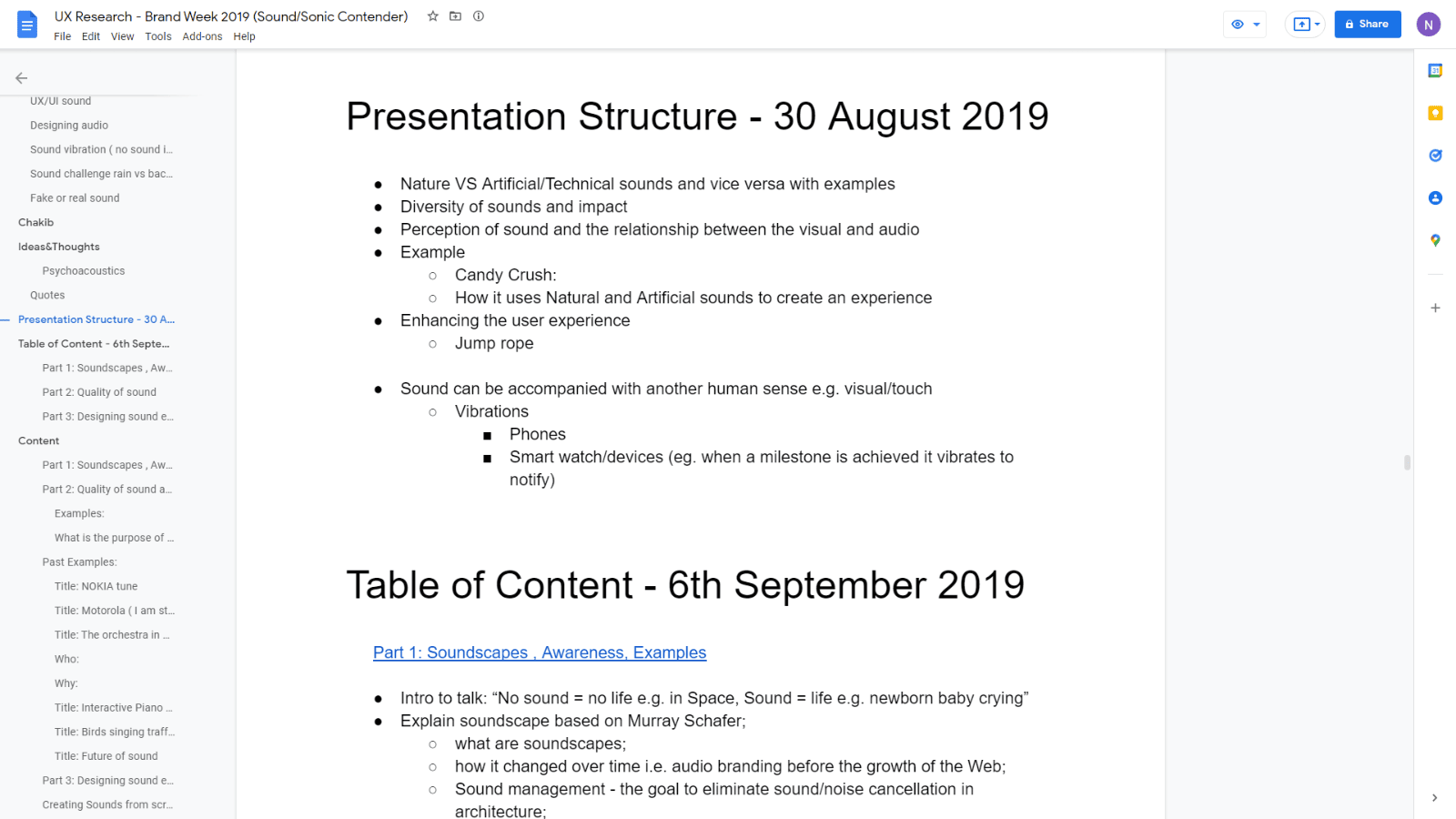
Whilst working on the content structure, I noticed that our previous research in Google Docs became inefficient in finding what we need due to the large number of links we collected. With the shortlisted links, I created a Google Sheet file to reference these research with additional details and analysis. Eventually, we added a "speakers notes" column, which will be used by the speaker during the presentation.
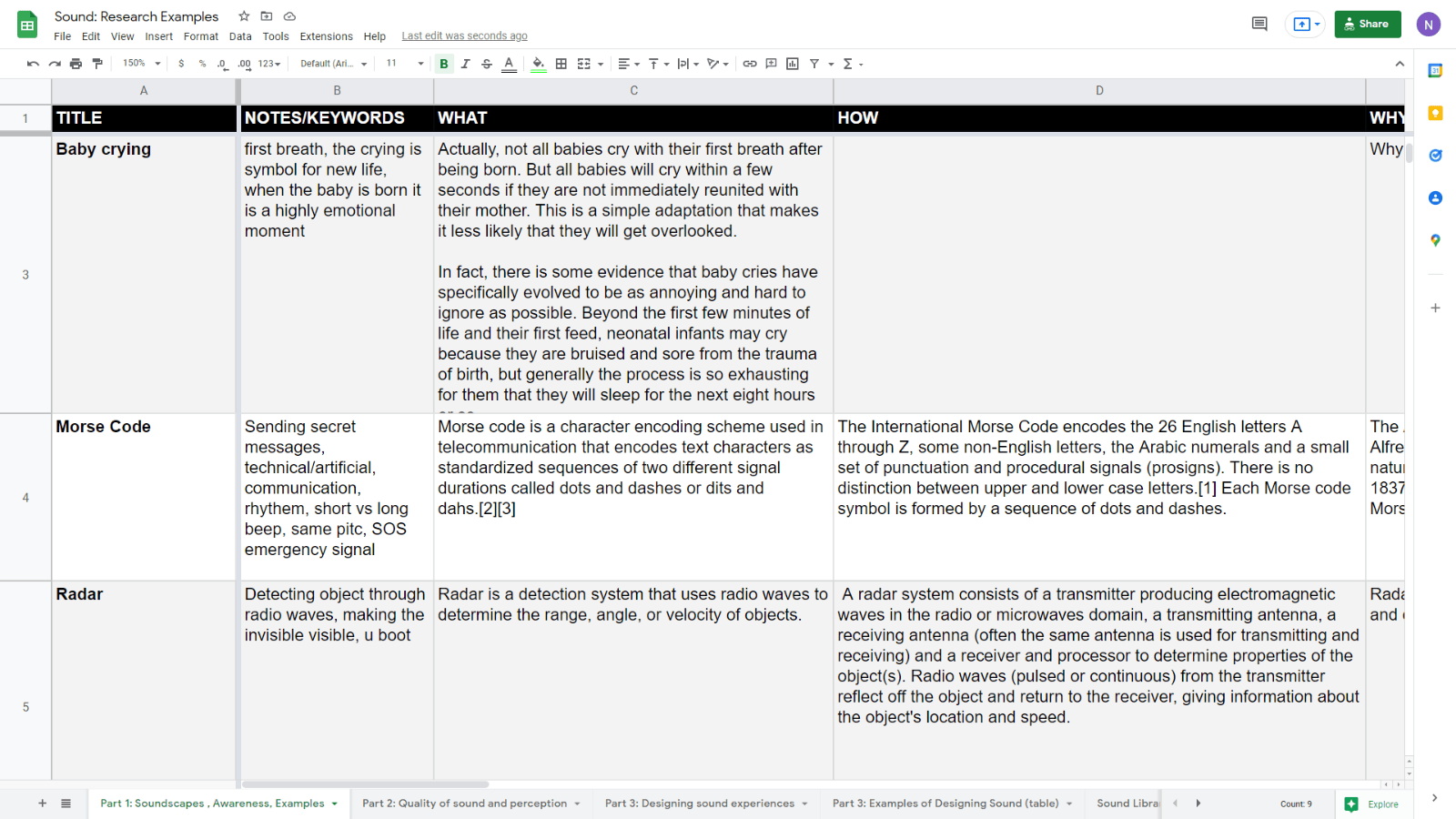
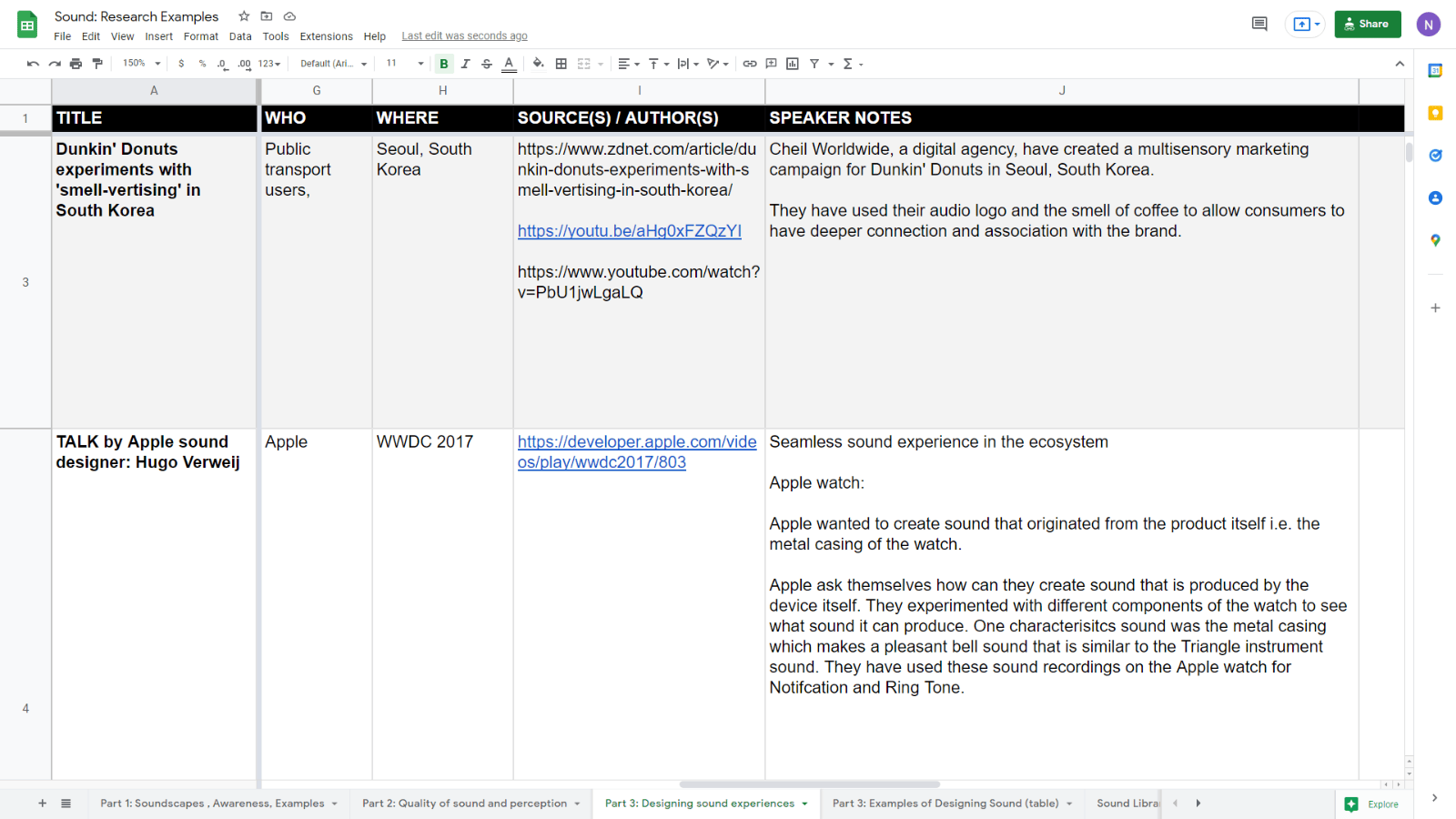
Once we had the final content structure, we created a separate Google Docs file and focused on shortlisting what research to use and gathering assets for creating the presentation in Keynote. This was very effective in saving time and helping us to prioritise tasks to finish the presentation. Additionally, it was also useful to have many content to work with as it was easier to reduce content instead of not having enough to present with.
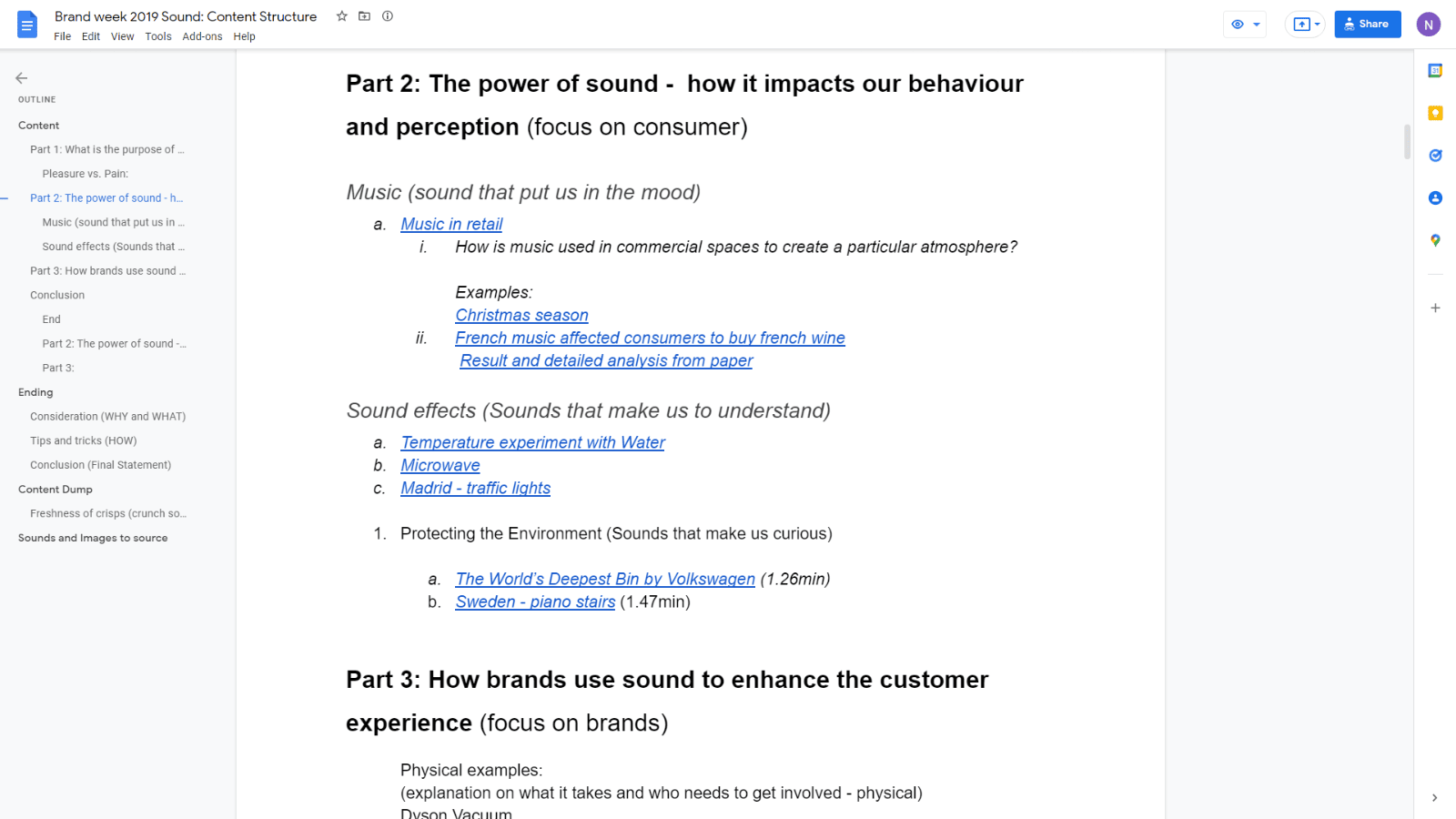
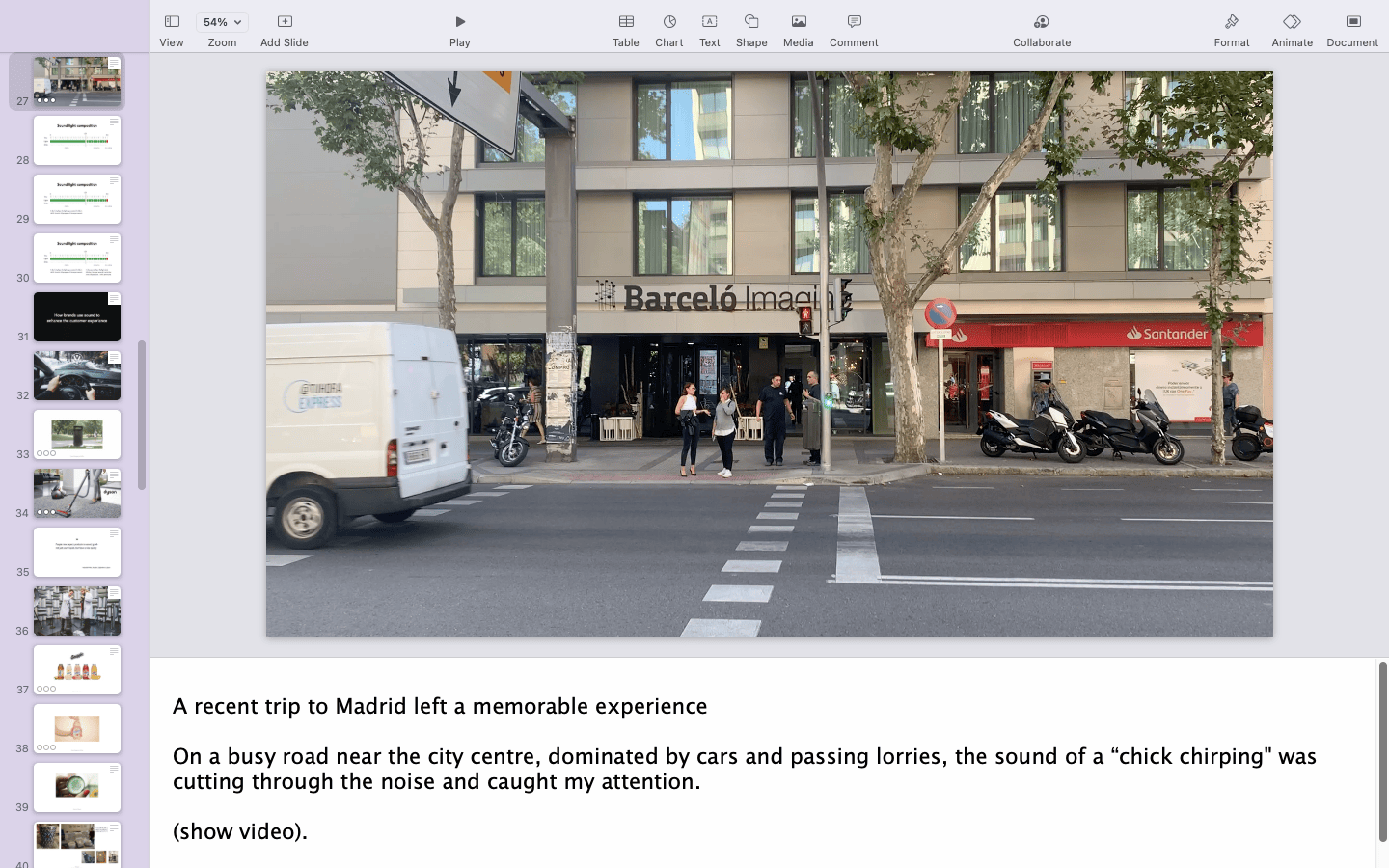
Presenting to the public
The research was presented at:
- UX Playground community
- Brand Week Istanbul, a business and marketing conference
- Berlin Design Week, a design conference
- Istanbul Bilgi University to the industrial design department
